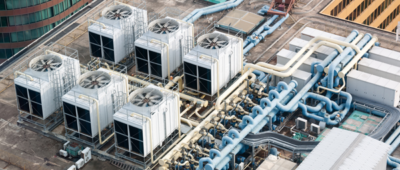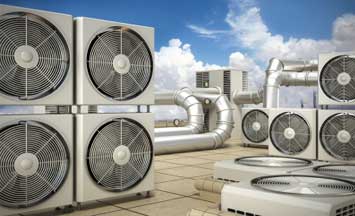HVAC Systems
Plate Heat Exchangers in HVAC Systems; HVAC systems (Heating, Ventilation, and Air Conditioning) are systems designed to perform heating, ventilation and air conditioning functions in buildings. These systems are used to improve indoor air quality, provide a comfortable indoor environment and increase energy efficiency. HVAC systems generally consist of an outdoor unit, indoor unit, air ducts and control systems. These systems provide circulation by bringing outdoor air into the interior, keep the interior at the desired temperature, clean the air and control humidity when necessary. Heat exchangers, an important component of HVAC systems, are used to manage temperature changes and increase energy efficiency. The rapid increase in commercial building and residential sales all over the world and increasing construction projects also trigger the growth in the HVAC sector. Increasing urbanization and industrialization every year continues to create a demand for more factories and residential projects using HVAC systems.
Plate Heat Exchangers in HVAC Systems
One of the system solutions used in response to this demand is Gasketed Plate Heat Exchangers. It is a heat transfer solution that is frequently used in heating, cooling, ventilation, “HVAC” and hot water applications with its low operating costs, high efficiency and flexible product range. It has an important place in heat transfer in today’s heating and cooling applications for comfort purposes.
Plate heat exchangers are devices used effectively and efficiently for heat transfer. These exchangers generally consist of metal plates and heat transfer occurs between the plates. Plate heat exchangers are widely used in HVAC systems to provide temperature control, heat recovery and energy efficiency. They are frequently preferred especially in large buildings, industrial facilities and process applications. These exchangers can be used to cool or heat liquids or gases and take up little space thanks to their compact design. Plate heat exchangers are preferred in HVAC systems due to their high efficiency and low maintenance requirements.

Plate Heat Exchangers in Residential Heating
In comfort-oriented applications, there are methods that use “water” as a fluid in heat transfer. The most well-known of these methods is the use of heaters (radiators). In this application, the hot fluid coming from the heat source (boiler, geothermal, etc.) transfers its heat to the other fluid circulating in the radiators with the help of the plate exchanger in between.
Another comfort-oriented application is underfloor heating applications. According to this method, heating is done through a pipeline circulation system located underground. Generally, the underfloor heating system is a complementary method to the central heating system. The circulation circuit in underfloor heating is connected to the heating system.
Another heating method is to create a hot air cycle by using fan coils in ventilation systems. This method is mostly preferred in public and public buildings for space heating.
One of the most common uses of Plate Heat Exchangers is domestic hot water production. As a heat source, hot water can be obtained by using solar energy, geothermal or waste heat recovery, which is one of the energy saving methods, in addition to existing heating sources (boiler, etc.).
Usage Areas of Heat Exchangers in HVAC Applications
Areas of use for plate heat exchangers in HVAC applications include: primary and secondary heating and cooling cycles, hot water installations, evaporators, condensers, heat recovery systems, industrial processes and hot water use. These exchangers can provide heat transfer between various liquids and operate in different temperature ranges. Plate heat exchangers play an important role in HVAC systems to reduce energy costs, increase system efficiency and minimize environmental impact. For this reason, HVAC engineers and facility managers often prefer plate heat exchangers and maintain these exchangers regularly.
Use of Heat Exchangers in HVAC Applications
SPX offers the HVAC concept consisting of economical and efficient heat exchanger solutions with a targeted and competitive system. There are various sizes of heat exchangers to meet all customer needs.
HVAC Applications
- Free Cooling
- Heat recovery
- Water source heat pump
- Thermal storage pressure breaker

- District heating cooling
Benefits of Using APV Heat Exchangers
- Compact dimensions have low operating and maintenance costs
- Suitable heat exchanger designs in places where installation space is difficult
- Maximum 21 000 gpm fluid flow rate in a single exchanger (4800 tons/h)
- Design pressures 450 psig (31 bar)
- Optimizes plate types for small exchangers at low pressure losses
- Full ASME code compliance
APV Paraflow and its Benefits
In gasketed plate heat exchangers, SPX provides the widest plate variety on the market, providing solutions for almost every HVAC application.
- Competitive body price range
- Compact design
- Superior heat transfer efficiency
- Easy to clean
- Non-adhesive gaskets
 Stainless Steel Products
Stainless Steel Products Mixing
Mixing Pumps
Pumps Heat Exchangers
Heat Exchangers System Solutions
System Solutions